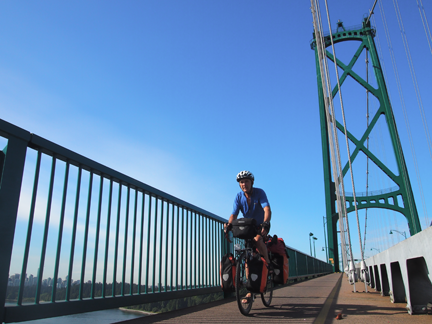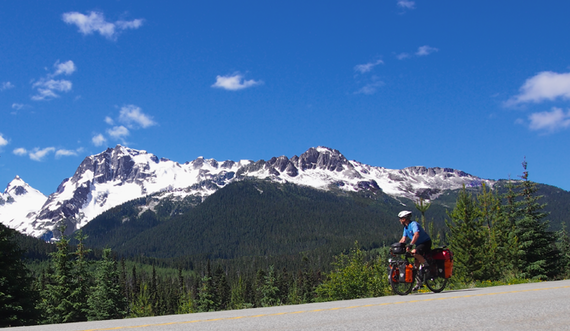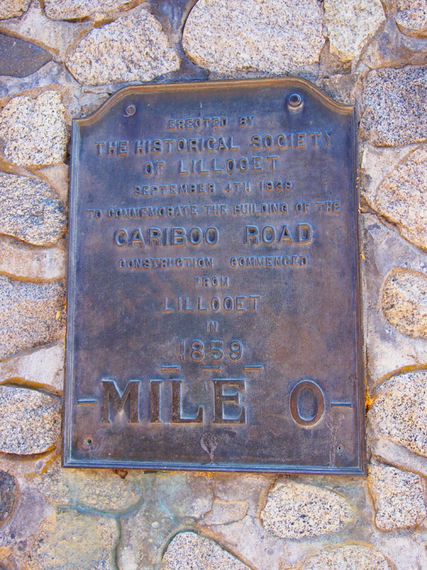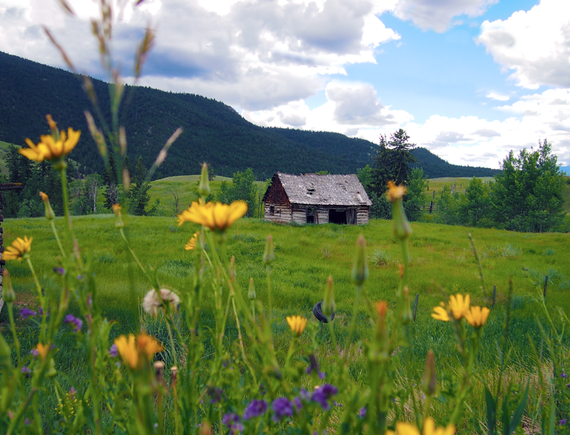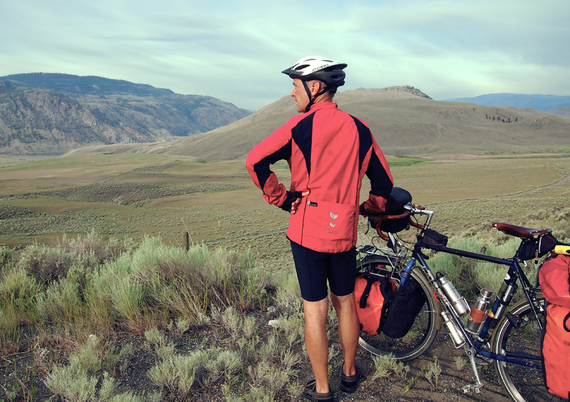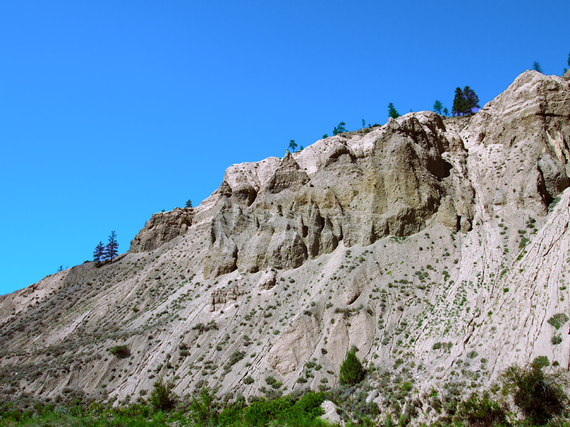I'm a travel and history buff, and I recently became interested in the British Columbia Gold Rush of 1858-9. I'd read about it, seen documentaries, and decided that it was about time for me to visit the region where it took place. I knew the prospectors had traveled through wild country with nothing but camping gear and a mule, and I thought it would be fun to recreate, as nearly as practicable, the sourdoughs' experience. But since I don't have a mule, my touring bicycle would have to do. So, on a bright summer morning in June, I loaded up my bike and headed north from my home in Bellingham, Washington State.
I spent the first night in Vancouver B.C., got up early and pedaled across the Lions Gate Bridge then north to Squamish where I slept in my tent at a rock-climbing camp. I reached the Whistler Blackcomb ski resort, home of the 2010 Winter Olympics, had dinner in a tony restaurant and camped a few kilometers north on the Soo River.
The next day, I rode up Cayoosh Pass, camped near the summit, and late the next afternoon, arrived in the historic town of Lillooet on the mighty Fraser River. I was now in gold rush country, the British Columbia Interior. The country is raw and primordial and strangely beautiful. The river runs wide and untamed here, and rocky crags rise dramatically out of the valley. Off in the distance, wooded, snowcapped peaks dominate the horizon. I've traveled the world, but I've never seen anything quite like it.
Today, Lillooet is a sleepy little village, known mostly for the prize steelhead fly fishermen pull from the Fraser. But it wasn't always that way. During the gold rush, it laid claim to the title, 'The Biggest City West of Chicago and North of San Francisco'. There's a plaque in town that marks Lillooet as the Mile 0 point of the Cariboo Highway, which follows the route of the old gold rush trail.
I camped near the river, rose early, and spent the day pedaling eastward on rolling hills, past pastures where buckskins grazed, beside tranquil lakes and beneath towering mountains. This early in the summer, the hills are still green, and the meadows are choked with wildflowers. The two-lane road I was on followed a stream that wound its way through a grassy valley. This part of the world is truly a photographer's paradise.
It took most of the day to make the 75-kilometer ride to the Hat Creek Ranch. It was a great feeling to round the last corner and spot my campground for the night. The temperature had been in the 80's, I was hot and sweaty, and all I could think of was how good that shower was going to feel! The Hat Creek Ranch is a kind of dude ranch where life of the Old West is recreated through its buildings and period-costumed reenactors.
I talked to the woman who plays the role of blacksmith and it turned out that she was a metal artist who found her creative outlet banging away at a forge. She told me that, indeed, the sourdoughs had used mules, and that camels had been imported, too, but the critters were too ornery and were eventually turned loose. The last one died, she told me, around the turn of the last century.
I had a fine dinner in the rustic restaurant and camped under a shady tree on the lawn where I was lulled to sleep by the burbling of a nearby brook. The next morning, I was up and on the road before daylight. I soon reached the intersection of Highways 97 and 99 where I turned south toward the town of Cache Creek, eleven kilometers down Highway 97. I rode on a wide shoulder past fields with long lines of giant sprinklers, and at one point, got an impromptu shower.
At Cache Creek, I hooked a left turn onto Highway 1, and as I traveled farther eastward, the land became drier. Gone were the evergreens and hardwoods of the country to the west, replaced by endless vistas of wiry, aromatic sagebrush. I followed the Thompson River, where the first nuggets were discovered and sparked the rush, to Kamloops Lake then climbed to a high plateau of more sagebrush and wildflowers.
I ended the day in Kamloops, the site of Hudson's Bay Fort Kamloops, where people of the First Nation once traded gold for supplies. It's now a modern, bustling city of nearly 100,000. I treated myself to a hotel and the next morning, I turned south and made the two-day ride along the picturesque high mountain Coquihalla Highway to Merritt, the 'Country & Western Music Capitol of Canada'. From Merritt, I rode west and north along the Nicola River through wild and mountainous terrain to the small town of Spences Bridge on the Thompson River. Along the way, I stopped at a roadside fruit stand and feasted on delicious, local cherries right off the tree.
Along the Nicola River
From Spences Bridge, it took another three days to make my way back to the U.S. border, winding along the hauntingly beautiful Thompson and Fraser River Gorges and passing through the charming hamlets of Lyton, (near where the Thompson meets the Fraser) Boston Bar and Hope. It had been a great trip, everything I'd hoped for and more. I'd gotten a taste of the gold rush trail and acquired new respect for the hearty miners who'd sought their fortunes in this rugged land.
The gold claims of the British Columbia Interior are long since played out, but a different kind of treasure awaits the traveler who makes the effort to visit this remote, varied and magnificent country.
